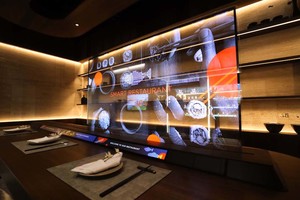Canon through pt. Datascrip presents the Canon EOS M50 Mark II mirrorless camera as a successor to the previous generation, the Canon EOS M50. This mirrorless camera which has a compact and easy-to-use design is aimed at photography and videography enthusiasts for social media content needs such as YouTube.
Powered by a DIGIC 8 processor and a 24.1 MP APS-C CMOS sensor, this camera can also record 4K resolution video. In addition, the Canon EOS M50 Mark II has also updated the Dual Pixel CMOS AF and Eye Detection AF technology so that it has high focus speed and accuracy on the subject.
“Easy to use and versatile, the Canon EOS M50 II gives users the freedom to create beautiful photos and 4K quality videos,” said Monica Aryasetiawan – Director of Canon Business Unit pt. Datascrip.
Added by Monica, with enhanced video and live streaming features, users can quickly and easily upload and share video content to social media platforms anytime and anywhere. In other words, this mirrorless camera is perfect for those who like to create creative content.
The Canon EOS M50 Mark II has been equipped with an enhanced Eye Detection AF feature so that it can easily and quickly detect and focus on the eyes and face of the subject, even at long distances. The Eye Detection AF feature can also be used in Servo AF mode for taking photos.
Meanwhile, in Movie Servo AF mode when recording video. So that the subject’s natural expression can still be captured even in moving conditions. The Canon EOS M50 Mark II has a continuous shooting speed of up to 7.4 fps in Servo AF mode and 10 fps in One-Shot AF mode when shooting in LiveView.
The display of the AF frame on the EVF or LCD screen on this camera has also been improved so that it is faster and smoother to track the focus of the subject, without experiencing on-screen lag. The EOS M50 Mark II is also the first EOS camera to use a fully touch-sensitive display with the new Tap AF feature
The new Tap AF feature can instantly move focus from one person to another by simply tapping on the screen, which is especially useful when doing group shots. This is an additional feature of Touch & Drag AF, where users can move the AF frame by dragging their finger on the screen while shooting via the EVF.
–

